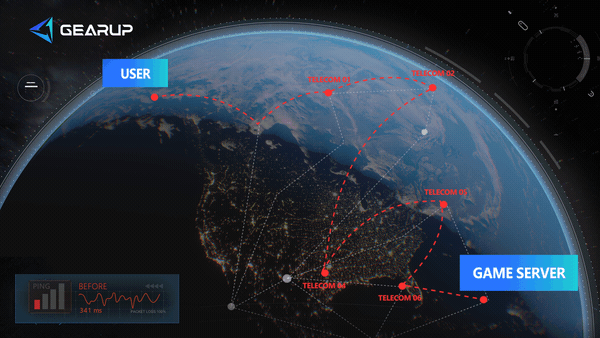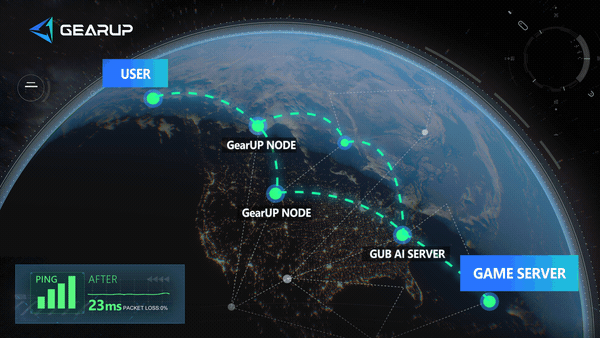How to Fix PlayStation NAT Type
Party voice hangs on “Joining…,” co-op invites expire for no reason, and matchmaking flips between hopeful and hopeless. When PlayStation NAT goes sideways on PS5 or PS4, everything social feels brittle. The good news is that NAT issues are rarely mystical; they’re the result of a few fixable choices at home. Treat this like a reviewer would: identify the culprit, change one thing at a time, verify at your real play hour, then freeze the setup that works.
What Is NAT on PlayStation?
NAT (Network Address Translation) acts like the "front desk" of your home network. Your internet provider (ISP) assigns your router a single public IP address, and the router then manages connections between that public address and the private addresses of your devices (like your PlayStation).
For online gaming—especially party chat and peer-to-peer (P2P) multiplayer—your console relies on NAT to correctly route incoming and outgoing traffic. The PS5/PS4 network test displays your NAT Type, which indicates how easily other players can connect to you.
PlayStation NAT Types
- NAT Type 1 (Open)
- Your console is directly connected to the internet (no router/firewall blocking traffic).
- Best for online gaming—minimal connection issues.
- NAT Type 2 (Moderate)
- Your router manages traffic but allows automatic port forwarding (UPnP enabled).
- Generally good—works for most games but may struggle in strict P2P lobbies.
- NAT Type 3 (Strict)
- Your router or firewall restricts incoming connections.
- Problematic—may cause lag, failed matchmaking, or voice chat issues.
Fix PlayStation NAT Types with HYPEREV
For most players, their NAT issues occur on the public network connection—specifically, the segment between their router and other players/game servers. This is precisely the part they cannot manually intervene in, and ISPs typically do not offer adjustments for it. Therefore, additional tools are required to resolve the problem:
HYPEREV - One-Click Solution
HYPEREV is a gaming router developed by GearUP, with its greatest advantage being its "configuration-free" optimization approach. Simply connect it to your existing router, then use the mobile app to boost your gaming with one click. Leveraging its powerful intelligent multi-path technology, it accurately identifies routing nodes to resolve unstable public network connections, thereby optimizing NAT types and enhancing stability during multiplayer sessions.


In HYPEREV, NAT optimization is a core feature available at no extra cost.
Currently, HYPEREV supports PlayStation, Xbox, Nintendo Switch, and PC, covering over 2,000 games. Unlike traditional gaming routers that apply generic fixes, it dynamically optimizes connections based on:
- Game-specific networking patterns
- Server locations
- Device characteristics
To deliver peak multiplayer performance.
You can learn more about HYPEREV by watching the introduction video below or visiting the GearUP store:
How to Fix Local Network Issues?
Diagnose Before You Tweak
Open Settings → Network → Connection Status and run the test at the same time of day you usually play. Write down the NAT Type and whether online services connect cleanly. If the NAT Type looks permissive but party voice still fails at night, you may be fighting local congestion or flaky Wi-Fi rather than session handling. Wire the console or move it to a clean 5 or 6 GHz band, then retest. If NAT is restrictive or tests intermittently fail, keep going; order matters.
Double NAT – Conflicting Gateways
A common scenario occurs when a personal router is connected behind an ISP-provided modem/router combo. This creates a "double NAT" scenario, where two devices attempt to manage network translation simultaneously. Symptoms include failed party chats, session timeouts, and unstable port accessibility.
Solution:
- Bridge Mode: Configure the ISP device to operate in bridge/modem-only mode, allowing your personal router to handle NAT exclusively.
- Access Point Mode: If bridging isn’t possible, convert your router into an access point, disabling its NAT function while retaining Wi-Fi capabilities.
UPnP Conflicts – Firewall Obstructions
PlayStation’s peer-to-peer connections rely on UPnP (Universal Plug and Play) to dynamically manage firewall ports. Disabling UPnP or mixing it with manual port-forwarding rules can cause connectivity issues.
Best Practices:
- Enable UPnP on the primary gateway.
- Remove redundant manual port-forwarding rules to prevent conflicts.
- If manual forwarding is necessary, ensure it aligns with PlayStation’s latest guidelines.
ISP-Level Restrictions – CGNAT or IPv6 Issues
If NAT problems persist despite local fixes, your ISP might be using Carrier-Grade NAT (CGNAT) or mishandling IPv6 translation. This often results in consistently restrictive NAT types.
Workarounds:
- Request a dedicated public IPv4 address (may incur fees).
- Enable end-to-end IPv6 if supported in your region.
- Switch to an ISP plan without CGNAT limitations.
PlayStation NAT: Quick Q&A
Q1: Do I have to change my NAT Type manually?
You can’t force a label; you create conditions that result in a more permissive type: one gateway, UPnP on, no conflicting rules, and no CGNAT. Of course, the most effective solution: HYPEREV.
Q2: Is port forwarding better than UPnP?
Not in typical homes. UPnP opens what it needs and closes it after. Manual rules are a last resort and too easy to misconfigure.
Q3: My NAT looks fine but party voice still fails at night.
That’s probably local airtime contention. Wire the console, put it on a clean 5/6 GHz band, give it priority on the router, and retest at the same hour.
Q4: Can a router defeat CGNAT?
No. You need a public IPv4 from the ISP or a plan with working IPv6 end-to-end; hardware can’t bypass carrier policy.
About The Author
The End